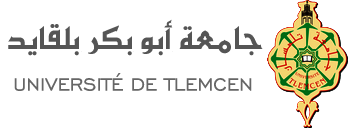IIt has been reported that individuals with impairments are unwilling towards their transition to university, face serious challenges during their university attendance or quit their studies without developing the necessary skills to cover future working requirements.
In Africa, more specifically, on one hand, higher education has failed modernisation, and on the other hand, individuals with impairments are numerous and have limited access to appropriately designed university programmes. Thus:
A. In Africa, 3.3% people from 15 to 59 years old have a severe disability, while 19.1% experience a moderate or a severe disability [WHO, 2011]. In Morocco, Algeria and Tunisia there more than 1 million persons (per country) with sensory disabilities, mobility impairments from musculoskeletal diseases and unintentional (road traffic accidents, falls, etc.) and intentional injuries (self-inflicted injuries, violence, and war) [WHO, 2009].
B. Though in Africa there are more than 1600 higher education institutes, tertiary education has not been prioritised for decades and the lack of development actions has led to the shortage of skilful human resources and the absence of connection between studies and labour market demands [UNESCO, 2017]. Access to higher education for the general population is at about 5%, just one-fifth of the global average of about 25% [GPE, 2015]. Equally discouraging is the scant participation of individuals with impairments in higher education. Concerning Partner Countries, the data collected from the participant institutions indicate a percentage of 0.02-0.03% (students with impairments in the general student population based on the number of enrolments every
academic year) for Algeria and Tunisia, and 0.01-0.08% for Morocco. From those few enrolled, only the 50%, approximately, graduates.
Similarly, WHO [WHO, 2011] reported that in Africa the participation of children and adolescents in school programmes is limited, while the lack of access to education and training entails exclusion from labour market.
Employment rates in Individuals with impairments combined with increase in state disability costs constitute a significant policy issue [United Nations, 2011]. The economic losses emerge both from direct (social assistance benefits in cash, support services, environmental adaptations, etc.) and indirect (loss of productivity and taxes from individuals with disabilities) costs. Thus, exclusion of students with impairments is a problem not only of the educational sector but also of the economic one.
In this project, we aim to the development of inclusive and accessible distance education programmes as a solution to education and unemployment dead ends for Individuals with impairments in Partner Countries. Accessible distance education programs will provide new opportunities for Individuals with impairments since they may have the ability to participate in education from a physical geographical distance, and attend lifelong learning, and vocational education and training programs with the flexibility that distance education offers.
Moreover, inclusive approaches have been found to be cost-effective. Though short-term costs may arise (adapting the educational material, training the staff, acquiring equipment), the long-term benefits (i.e., economically active citizens) outweigh them [GSDRC-Helpdesk Research Report, 2012]. Hence, a wide horizon of education and training opportunities for continuity and success in academic course, new and/or job-specific skills acquisition, emerges as a key element towards modernization of higher education in Morocco, Algeria and Tunisia.
Accessible inclusive distance education is a multi-axis project and, consequently, it addresses multiple thematic national priorities and an amalgam of regional priorities resulting in diversification within the region in terms of the objectives – specific and overall, activities, and target groups (cross-cutting priority).
The project InSIDE addresses:
• The introduction of new technologies in higher education. The project presents high relevance to the modernisation of higher education systems since it requires:
a) the equipment of partner institutions with an extended series of (assistive) technology,
b) the update of educational approaches with the establishment of a whole new model (accessible Distance Education),
c) the training for acquisition of new digital and educational skills for administrative and teaching staff, and the learners with and without impairments resulting in the mobilisation of all these stakeholders.
- The equity, access to and democratisation of higher education. The project presents high relevance to the inclusion of disadvantage groups of people since it aims at including individuals with impairments in higher education through the provision of accessibility services by the relative offices, and accessible and inclusive distance education programmes.
- The development of school and vocational education at post-secondary non-tertiary education level, since the project entails in-service training of teachers and reformation
- of their profession within their engagement in a significantly differentiated model of education.
- The internationalisation of higher education institutions through the development of international relations capacities, since with the establishment of accessible and inclusive distance education programmes, a wide horizon of international and intercultural participations both for teachers and students opens.
- The university services, since it requires the establishment of accessibility offices that will ensure accessibility services and guidance for all the students with impairments during distance education programmes and beyond these.






